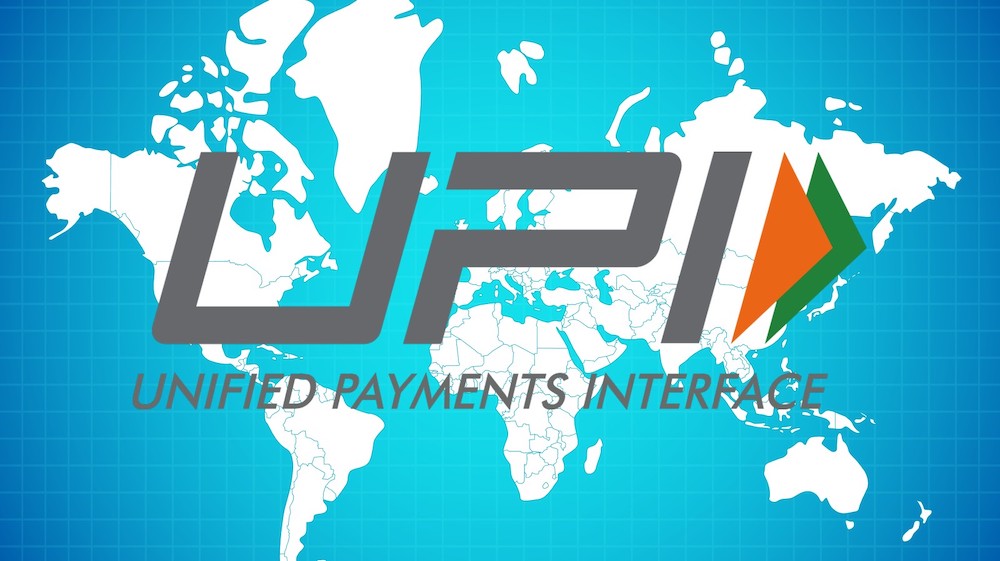
India’s Unified Payments Interface (UPI) has revolutionized the way people make and receive payments. This innovative digital payment system, launched in 2016, has achieved remarkable success within India, boasting billions of transactions monthly. However, the ambition of UPI doesn’t stop at national borders. Recognizing its potential, India is actively working towards expanding UPI’s reach to a global audience. Let’s embark on a journey to explore the countries that currently accept UPI payments and analyze the implications of this international expansion.
UPI: A Boon for Digital Transactions
UPI offers a convenient, secure, and instant method of making digital payments. It leverages mobile banking infrastructure, allowing users to link their bank accounts to a single mobile application. Payments are then facilitated through a unique virtual payment address (VPA) or a scannable QR code, eliminating the need for physical cash or card details. The simplicity and security of UPI have made it the preferred way for millions of Indians to conduct everyday transactions.
Significant Growth of UPI Transactions in India: Unveiling the Key Statistics and Trends
India’s Unified Payments Interface (UPI) has emerged as a dominant force in the digital payments revolution. Launched in 2016, UPI has witnessed phenomenal growth, transforming the way Indians make and receive payments.
Exponential Growth in Transaction Volume and Value:
- Volume: UPI transactions have experienced a staggering growth trajectory. From a mere 92 crore transactions in FY 2017-18, the volume soared to a staggering 8,375 crore transactions in FY 2022-23, reflecting a Compound Annual Growth Rate (CAGR) of 147%.
- Value: The value of transactions has also witnessed a remarkable rise. Starting at ₹1 lakh crore in FY 2017-18, the value of UPI transactions reached a staggering ₹139 lakh crore in FY 2022-23, representing a CAGR of 168%. Recent data suggests UPI transactions crossed ₹17.4 lakh crore in December 2023 alone.
Going Global: India’s Push for International UPI Adoption
With the domestic success of UPI, India is now strategically focusing on expanding its reach beyond national borders. This initiative is driven by several factors:
- Facilitating Inbound Tourism: UPI acceptance can be a significant convenience for foreign tourists visiting India, allowing them to make cashless payments without exchanging currency.
- Supporting the Indian Diaspora: A large Indian diaspora resides overseas, and UPI can provide them with a familiar and convenient way to send remittances back home.
- Boosting Cross-Border Trade: Increased UPI acceptance can foster smoother and faster cross-border trade transactions between India and other countries.
The National Payments Corporation of India (NPCI): Leading the Global Expansion
The National Payments Corporation of India (NPCI), the umbrella organization overseeing retail payments in India, plays a crucial role in promoting UPI’s global acceptance. NPCI has established two key arms to facilitate this expansion:
- NPCI International Payments Limited (NIPL): This dedicated arm focuses on establishing partnerships with international payment service providers (PSPs) and facilitating integration of UPI with international payment networks.
- UPI Hub: The UPI Hub serves as a central infrastructure for routing and clearing international UPI transactions, ensuring smooth and secure cross-border payments.
Current Landscape: Countries Accepting UPI Payments
The Unified Payments Interface (UPI) has gained significant traction beyond India, fostering cashless transactions for travelers and the global Indian diaspora. Here’s an updated overview:
Countries Accepting UPI:
- Singapore: While a 2020 FinTech agreement paved the way, full-fledged UPI integration is still under development in Singapore.
- Bhutan: Bhutan remains one of the first countries to adopt UPI outside India in 2021, collaborating with the Royal Monetary Authority of Bhutan (RMA).
- Nepal: Limited adoption exists in Nepal, with some merchants, particularly in the tourism sector, accepting UPI payments. Broader integration is underway.
- UAE: Launched in 2022 through collaborations with Mashreq Bank and LuLu Financial Holding, UPI is available in the UAE for specific transactions.
- France: As of February 2024, UPI entered Europe through France, with the iconic Eiffel Tower and select merchants accepting UPI payments.
- Mauritius and Sri Lanka: Both countries announced initiatives in 2023 to adopt UPI, aiming to simplify transactions for the Indian diaspora and strengthen economic ties with India.
The Road Ahead: Expanding the UPI Network
India is actively pursuing partnerships with several other countries to expand UPI’s global reach. Some potential future adopters include:
- Malaysia: Discussions between India and Malaysia regarding UPI integration are underway.
- Thailand: Thailand has expressed interest in adopting UPI, potentially impacting cross-border tourism and trade.
- UK: The Indian diaspora in the UK represents a significant market, making the UK a potential candidate for UPI adoption.
- Other Gulf Countries: With strong economic ties between India and the Gulf region, countries like Saudi Arabia and Bahrain could potentially embrace UPI in the future.
Benefits and Challenges of Global UPI Adoption
The global expansion of UPI offers several benefits:
- Convenience for Travelers: Indian tourists and the global Indian diaspora gain a familiar and secure payment option.
- Boost for Cross-Border Trade: Faster and easier cross-border payments can stimulate trade between India and other countries.
- Financial Inclusion: UPI can promote financial inclusion globally by reaching unbanked populations with a user-friendly mobile payment system.
However, some challenges need to be addressed:
- Cybersecurity Concerns: Ensuring robust cybersecurity measures across different systems and countries is crucial to prevent fraud and data breaches.
- Technical Standards: Adapting UPI to different technical standards used by various international payment systems requires ongoing collaboration and effort.
- User Awareness and Adoption: Creating awareness and encouraging adoption of UPI amongst foreign users and merchants will require targeted marketing and educational initiatives.
The Future of UPI: A Global Payment Revolution?
While it is still early to predict the full extent of UPI’s global reach, its potential is undeniable. By addressing the challenges and continuing its strategic international expansion, UPI has the potential to become a leading player in the global digital payment landscape.
Several factors can contribute to its success:
- Growing Popularity: The increasing popularity of digital payments globally creates a fertile ground for UPI’s adoption.
- Focus on User Experience: UPI’s user-friendly interface and convenient features can attract users across diverse demographics.
- Government Support: Continued support from the Indian government and collaboration with international stakeholders are crucial for driving global adoption.
A Catalyst for Change
The journey of UPI’s expansion beyond India’s borders is just beginning. While challenges remain, the potential benefits of a global UPI ecosystem are promising. By promoting financial inclusion, facilitating cross-border transactions, and offering a convenient payment solution for travelers and the diaspora, UPI can serve as a catalyst for positive change in the global payments landscape. As the network continues to grow, it will be interesting to observe the impact of UPI on international trade, tourism, and the overall financial landscape in the years to come.








